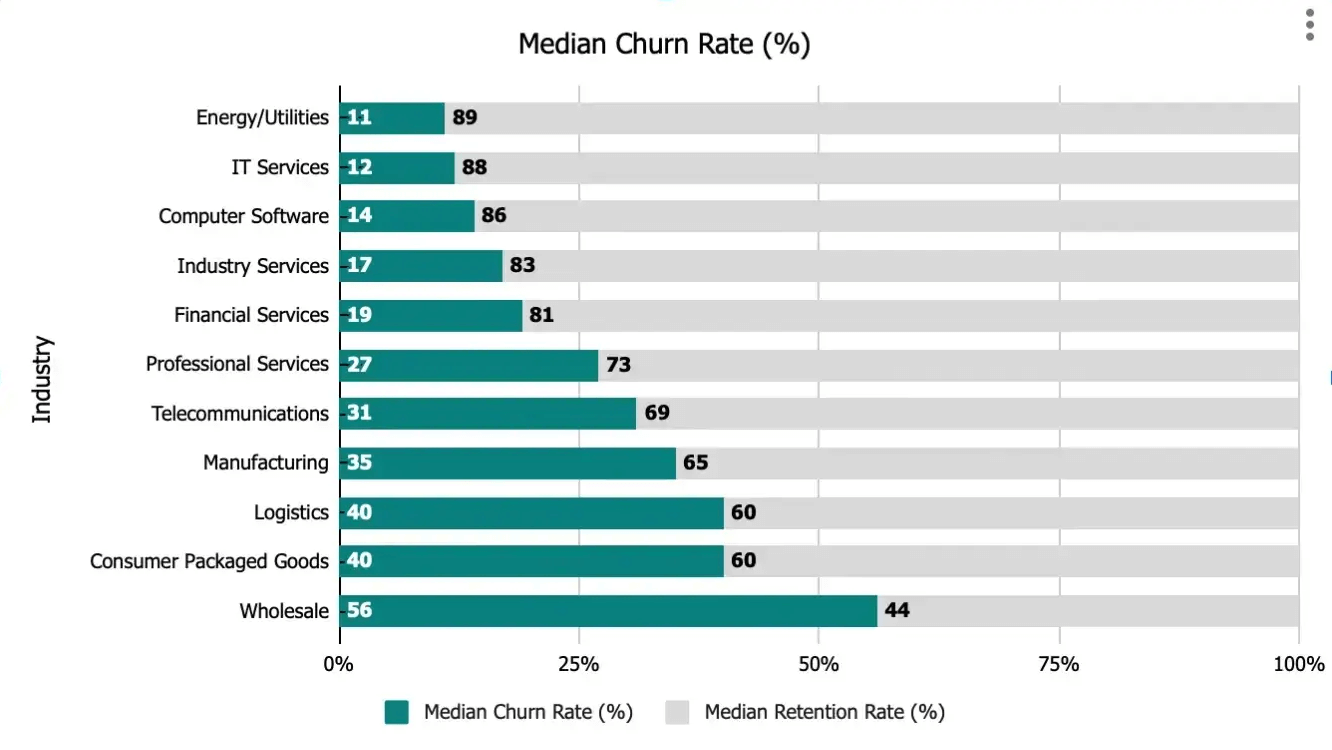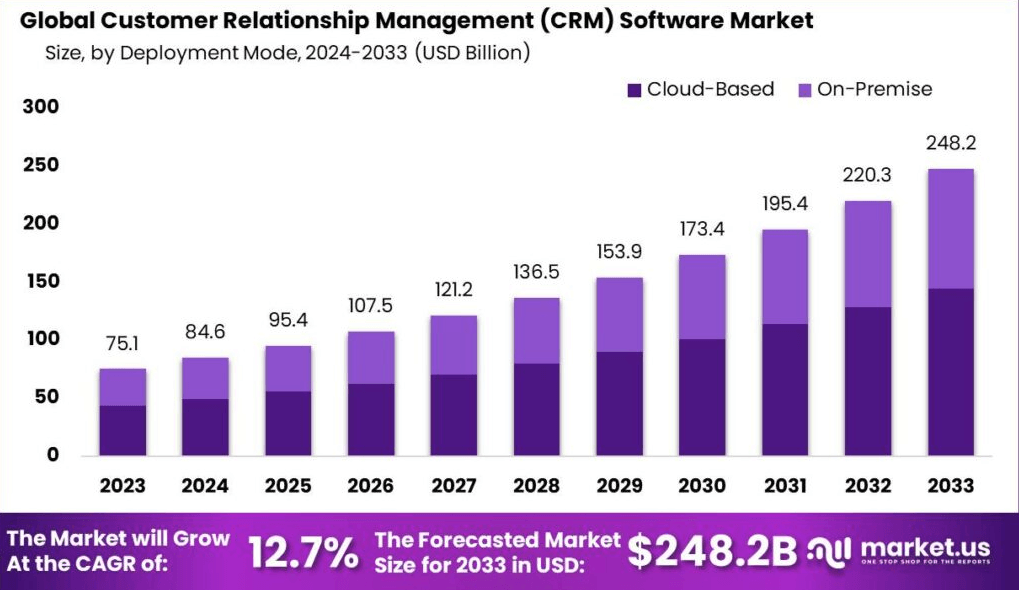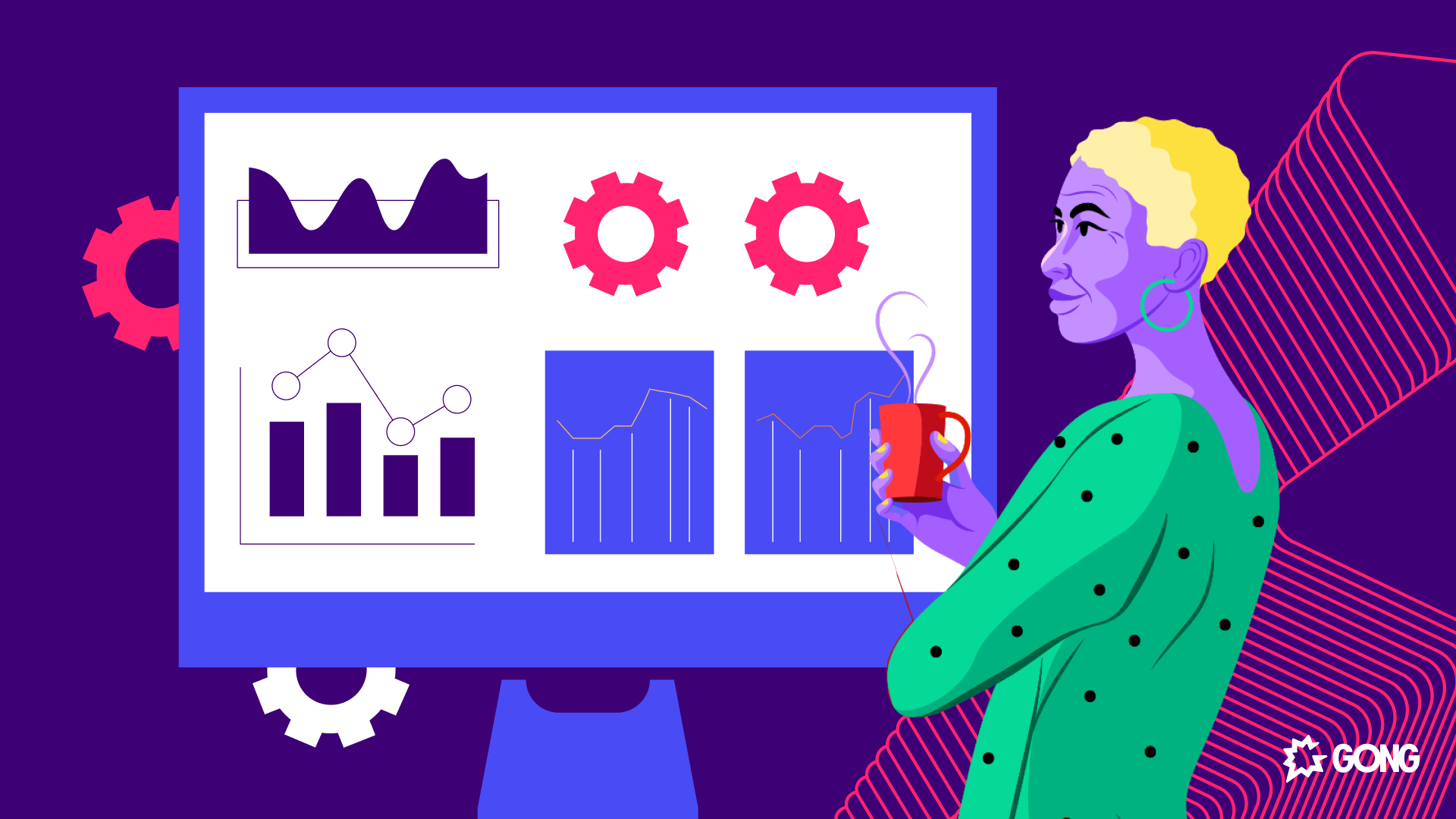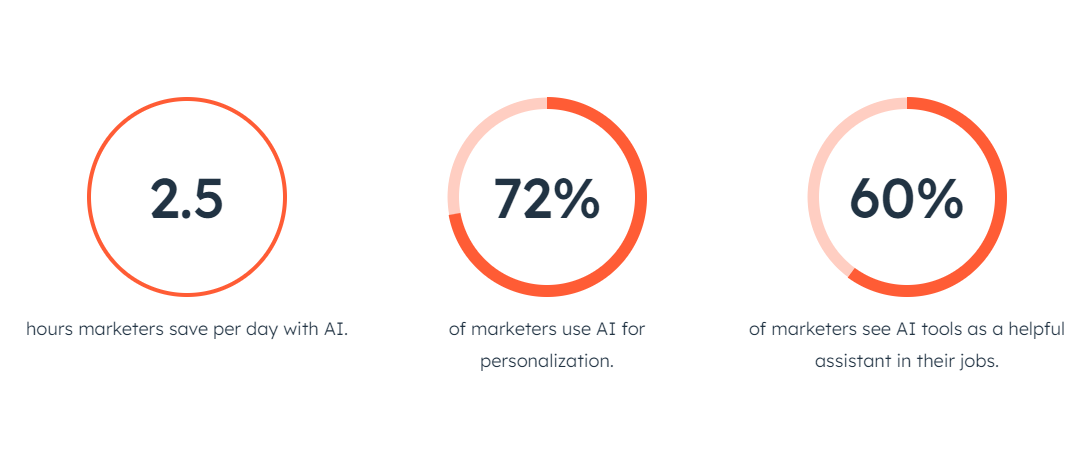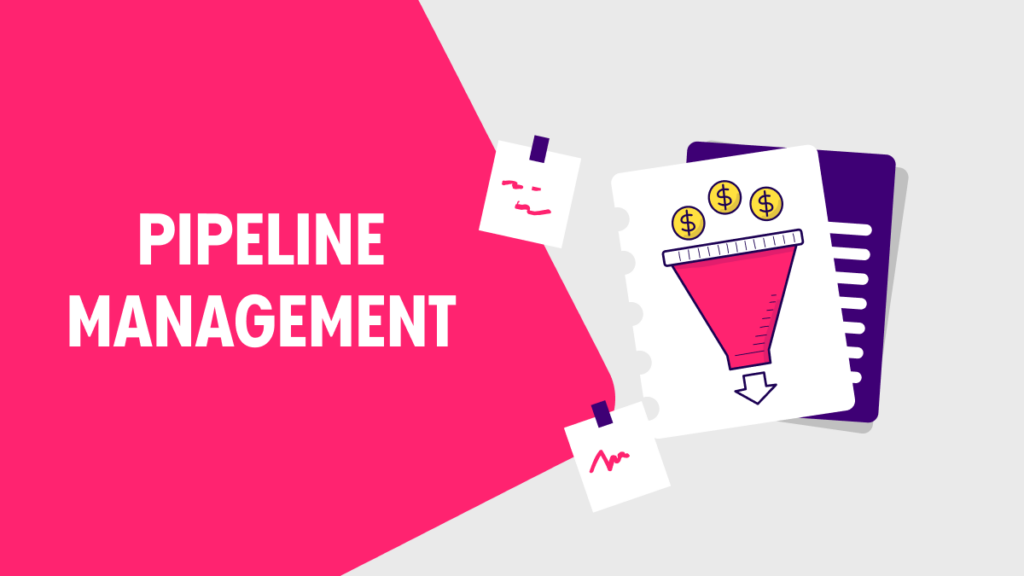
A healthy sales pipeline is critical to moving prospects from one stage of the sales funnel to the next. It’s also a foundational part of driving revenue growth on your sales team.
Most sales managers and their teams struggle to manage their pipeline successfully. Reps commonly forget to send follow-ups, bottlenecks pop up, managers don’t know where to coach most effectively, and before you know it, winnable deals fall through the cracks. That’s no way to run your sales process.
The solution lies in modern, efficient sales pipeline management.
This article covers everything you need to know about pipeline management — what it is and how it can improve your sales, as well as actionable tips and best practices. We also delve into AI-driven software that can help you manage your sales pipeline from lead to closed-won.
What is pipeline management?
Sales leaders put time and effort into identifying new sales opportunities, closing deals, meeting their sales quota, and boosting sales performance. And yet, according to a 2021 survey, as many as 33% of B2B marketing decision-makers still struggle to reach their target market and generate qualified leads. That has dire implications for the health of their overall pipeline and their team’s quota.
If you’ve noticed that your team’s sales efforts seem to fall flat no matter what you do, it’s time to take a look at the state of your sales pipeline management — how you oversee and organize your team’s entire sales cycle.
What is a sales pipeline?
A sales pipeline is the sequence of stages and activities your sales team uses to move prospects through their buying journey.
It’s typically broken into stages that move from acquiring to nurturing to ultimately converting leads into customers. These stages make it easier to analyze your pipeline, identify areas for improvement, and track whether any changes you implement have the intended effect. Pipeline management also involves designing a pipeline that reflects your company’s broader sales goals.
The stages of a sales pipeline
The stages of a sales pipeline will look different at every company, depending on its product, target market, business model, scale, industry, etc.
That said, a typical sales pipeline contains seven stages:
- Prospecting focuses on identifying and attracting potential buyers through digital marketing efforts.
- Lead qualification helps you weed out prospects who aren’t a good fit for your offering and who don’t show any real buying potential. Not all leads are created equal, and you don’t want to waste time and resources on prospects who aren’t likely to buy.
- Nurturing happens after a lead is qualified, and involves the sales team reaching out to initiate contact. They might send personalized emails, schedule calls or meetings, conduct discovery, and provide relevant information to keep the buyer interested.
- In the proposal stage, you get to run a demo to show your buyer that you understand their pain and have a product (or a service) that can address their needs and solve their challenges. You make a pitch that reveals your value proposition and your differentiators.
- Negotiation is crucial because no matter how good your pitch is, the likelihood of closing a deal on the first try is slim. It might take some time for you to reach an agreement and work out the details, but a good negotiation process brings you closer to a signature.
- Closing is when you’ll hopefully close the sale. Your entire sales process leads up to this point, where you convert prospects into customers.
- Customer success is the final, post-sale stage of the pipeline, and it plays a crucial role in building an ongoing relationship with your buyer. It involves onboarding the customer and educating them on the use of your product to ensure their satisfaction. Your team may also engage in up-selling and cross-selling opportunities to maintain the buyer’s satisfaction with the product over time, as their needs change.
Sales pipeline vs. sales funnel
Technically speaking, the terms “sales pipeline” and “sales funnel” can both refer to the flow of prospects through the sales process. But while sales professionals may sometimes use the two terms interchangeably, they don’t refer to the same thing:
- A sales pipeline refers to sales process stages — including lead generation, qualification, and retention — and the actions sales teams may take to ensure that their prospect moves through those stages from lead to close.
- A sales funnel visually represents that process from the customer’s perspective. It’s wider at the top as numerous prospects enter, then gets increasingly narrow as buyers drop off, and ends with a smaller number of buyers moving through the end of the funnel and making a purchase. It’s merely an illustration of how leads move through the pipeline stages.
Why is pipeline management important?
An optimized pipeline leads to a shorter sales cycle and more sales — which means more revenue.
That’s an oversimplification, but it reflects how vital pipeline management is to your sales organization’s success.
With that said, here are four key benefits of sales pipeline management you can achieve on your team:
Increase conversion rates and drive growth
The most obvious benefit of getting your sales pipeline under control — and defining the specific actions your team should take at each stage of the sales process — is the revenue growth you’ll experience.
Proper sales pipeline management sets the stage for all your sales efforts by ensuring that everything works like a well-oiled machine. It requires that you have a complete view of the prospects in your pipeline, so you can make sure “good-fit” deals don’t slip through the cracks or grow cold. You can also ensure that everyone on your team operates at their best. When your reps follow best practices, you’ll see an improvement in your numbers and be more likely to meet your revenue goals and drive growth.
Forecast accurately
Once you start tracking key sales performance metrics and analyzing previously closed deals, you’ll be better positioned to make more accurate sales forecasts.
That, in turn, allows you to make more informed decisions about your team’s resources, set more realistic sales and revenue goals, and know where to direct your own coaching efforts. When leadership is confident in your ability to call and achieve your forecast, they can make better business decisions. You can set the stage for great decision-making when you know how your sales pipeline is performing.
Gain visibility into team performance
The most important thing about sales pipeline management software is that it gives you access to customer interaction data you can use to gain valuable insights into your team’s performance.
As a sales manager, you’ll be able to assess your sales reps’ productivity, identify your top performers and the sales activities that make them more successful. You’ll also be able to recognize challenges that prevent the rest of your sales reps from reaching their full potential and spot risks happening inside deals.
Increase sales velocity
Sales cycle length is an important factor in your team’s success and their ability to achieve quota. In a well-managed pipeline, each stage runs smoothly and your prospects flow through the sales process quickly, reducing the length of your sales cycle.
The math is pretty simple:
The shorter your sales cycle, the more wins your sellers can chase and the faster they can grow revenue.
6 tips to improve pipeline management on your team
Below are proven tips and best practices you can use to improve your sales pipeline management — and boost your sales performance.
Monitor your sales pipeline metrics
Without critical metrics and reliable data it’s practically impossible to identify which sales pipeline stages need improvement, let alone accurately measure the effect of any changes you make.
Some sales teams try to track every pipeline metric in the book — dozens of them — while others might overlook the most critical ones. Either way, it’s tough to maintain an effective pipeline management strategy and meet your revenue goals if you have no idea how your pipeline is performing.
With that in mind, keep an eye on the following key sales performance metrics:
- Number of deals: This is the total number of leads currently in your pipeline.
- Average deal size: This measures the average value of each deal your team closes.
- Sales cycle length: This measures how long it takes to turn leads into customers.
- Pipeline velocity: This measures how quickly prospects move through each stage of your pipeline.
- Win rate: This is the percentage of deals you’ve won relative to your total number of closed deals.
- Conversion rate: This is the percentage of leads that convert to the next stage in your sales pipeline.
- Churn rate: This measures the number of paying customers you’ve lost within a given timeframe.
Diversify your content to attract more customers
By the time buyers reach your website, they’ve already done their online research, compared prices, and read a few customer reviews. In fact, today, 54% of consumers turn to search engines as their go-to source of information.
While most buyers prefer to do pre-purchase research independently, your content still plays a key role in attracting “right-fit” leads and encouraging them to progress to the next stage in the sales process.
Remember that the type of content each buyer responds to will vary depending on where they are in their buying journey. Your goal in managing your pipeline to accommodate this reality is twofold: Review your entire sales process to determine whether you have content gaps at any point in the journey. Then develop a content strategy that includes everything from blog posts and ebooks to webinars, case studies, and customer success stories.
Most importantly, make sure your content provides your buyer with value and supports them as they move to the next stage in their customer journey.
Leverage AI, automation, and CRM software
Considering how complex pipeline management can be and the amount of data it involves, you shouldn’t attempt to handle it manually. When it’s done well, it’s beyond the scale of what humans can manage, plus you can automate many aspects of sales pipeline management today using software solutions.
That brings us to sales pipeline management tools and other business software.
Customer Relationship Management (CRM) software is crucial in optimizing workflows, gathering crucial data, and maintaining an effective sales strategy.
But it has its flaws, namely that it loses close to 99% of the words spoken on calls, and that it’s dependent on reps to enter the data they think is important to a given deal. (They spend hours on this each week and often get it wrong.)
If you’re ready to take your current CRM system to the next level, consider integrating it with Gong’s Revenue Intelligence Platform. You’ll be able to manage your pipeline using AI-backed software that makes it incredibly easy to keep track of your team’s sales activities at a macro and micro level, gain real-time insights into deal risks and opportunities, and improve your sales forecasting. You’ll also bring all your data and everyone involved in the sales process into one platform where they can easily collaborate.
Make timely follow-ups a priority
Modern-day buyers have more choices available to them than ever before. Making things even trickier for your sales team, buyers are constantly bombarded with advertising, promotional emails, and sales calls. It can be challenging to cut through all that noise, let alone convince prospects to choose you over the competition.
The one-and-done approach to closing a sale no longer cuts it. Without timely follow-ups, your sellers are at risk of losing prospects who are already in your pipeline. Following up — not only in a timely manner, but with personalized content — is critical to differentiating your offering in today’s market.
Keep the sales process simple and standardized
The whole point of building a sales pipeline with its clearly defined stages, activities, and sales metrics is to create a roadmap that is organized and aligns with your broader sales goals.
When it’s well-defined, there’s no room for misinterpretation by your sellers. Clarity takes the guesswork out of the entire sales process for everyone involved. Moreover, it simplifies communication, ensures transparency and accountability, and makes onboarding new sales team hires easier.
Most importantly, a standardized sales process is easy to replicate and leads to more consistent results and accurate forecasts, quarter over quarter.
Review your sales pipeline regularly
Even when your pipeline is well-managed and rolling along smoothly — getting the results you want — there’s one very important lesson you should never forget: Your sales pipeline isn’t set in stone, and you should never treat it as such.
Even if you’ve figured out the optimal pipeline structure for your sales organization, you have to conduct regular reviews of your sales pipeline. (We mean annually, if not quarterly.)
Review everything from the number of deals in each stage to sales velocity, average deal size, average deal value, and other key metrics we noted in this article. Look for trends and patterns along with inefficiencies, gaps, and other aspects of your sales pipeline that need improvement. Address them early on and often to ensure you maintain an effective sales strategy, year over year.
Gong’s Revenue Intelligence Platform gives sales reps, managers, and leaders 360-degree visibility into the entire sales process and every deal in it. Use this information to keep deals on track and create more accurate forecasts.
How can AI improve your pipeline management?
AI has made its mark in virtually every sector, including sales. In fact, according to The State of AI In Sales report, sales reps already view AI as a crucial part of their business processes, primarily in terms of automating manual or repetitive tasks (35%), getting real-time insights into sales performance (34%), and supporting digital marketing efforts, including sales content and outreach email creation (31%).
If your sales and marketing teams aren’t using AI-powered business software to handle routine tasks, sales forecasting, and marketing automation, to name a few, you’re already at risk of falling behind your competition.
With that in mind, here are a few examples of how AI platforms can level-up your sales pipeline management:
- Get real-time pipeline visibility: Get a comprehensive, real-time view of your entire sales pipeline. Use AI to capture and analyze customer interactions and reveal the health of your entire pipeline and every deal in it.
- Identify deals at risk: Use AI and conversation intelligence to analyze hundreds of data points across call transcripts, emails, and other data sources, to identify deals at risk of stalling. Then prioritize your efforts on deals that require immediate attention.
- Forecast more accurately: Leverage historical data and real-time insights to provide accurate revenue predictions so you can make informed decisions about resource allocation, goal setting, and overall sales strategy. Gong Forecast, for example, is predictive, AI-backed software that’s built on Gong’s Revenue Intelligence Platform.
- Provide data-driven coaching: Identify coachable moments in your sales team’s customer interactions using data-backed insights. It’s a fast way to focus your efforts and improve your team’s performance.
- Streamline your sales process: Automate repetitive manual tasks and provide actionable insights to your reps. It frees up more of your time (and theirs!) and lets your reps focus on building relationships and closing deals.
Gong’s AI-backed platform will provide you with the data-driven insights you need to manage your pipeline and meet your revenue goals.
Better pipeline management means more revenue
Sales pipeline management is the foundation of a healthy, well-functioning sales process, and the key to keeping buyers moving through the sales funnel faster. It requires the right software and a willingness to embrace AI-backed change.
Ready to improve your sales process, drive growth, and take your team’s productivity to the next level? Book a demo to see how Gong’s Revenue Intelligence Platform can help you and your team meet all your goals.
Related reading: If you liked this article, check out Sales pipeline tracking: 3 risks costing you winnable deals and A guide to building effective and accurate sales pipeline reports to learn more.



